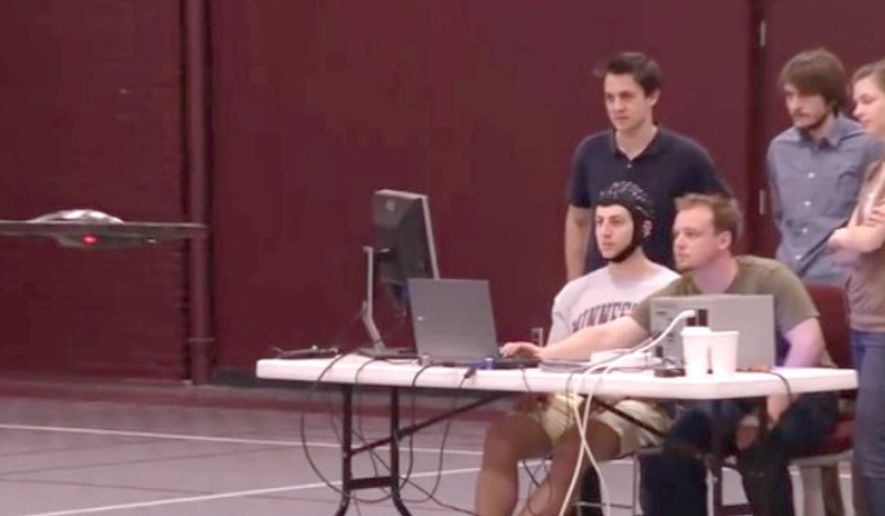The Pentagon wants mind-controlled drones.
The Office of the Secretary of Defense and The U.S. Army Research Laboratory have teamed up with the University of Texas at San Antonio to help make make their vision for the mind-controlled devices a reality.
The school was granted $300,000 so professors and graduate students can better understand how brain waves can be translated into commands for drones, Business Insider reported Thursday. UTSA was given another $400,000 grant for equipment.
Business Insider highlighted that it isn’t the proof-of-concept the Pentagon wants — the University of Minnesota posted a video to YouTube last year that demonstrated rudimentary mind-control over drones is possible — but a perfected version of such brain-computer interfaces is still lacking.
Daniel Pack, who manages the Unmanned Systems Laboratory at the university, told the website that eventually the military would like one person to simultaneously have control over swarms of drones.
The Pentagon’s desire to understand how to meld the human mind with machines is not new. For instance, the Defense Advanced Research Projects Agency (DARPA), has already created a computer chip with over 5 billion transistors and more than 250 million “synapses” that mimic the connections between neurons in the brain. It worked with scientists at IBM to bring the technology to fruition.
SEE ALSO: Drones from the deep: Pentagon develops ocean-floor attack robots
The Pentagon believes that the new chip will allow drones to more accurately assess threat environments and afford troops the ability to carry lighter equipment on deployments, since brain-inspired technology runs more efficiently and requires less batteries.
“Computer chip design is driven by a desire to achieve the highest performance at the lowest cost. Historically, the most important cost was that of the computer chip. But Moore’s law — the exponentially decreasing cost of constructing high-transistor-count chips — now allows computer architects to borrow an idea from nature, where energy is a more important cost than complexity, and focus on designs that gain power efficiency by sparsely employing a very large number of components to minimize the movement of data,” Gill Pratt, DARPA program manager, said Aug. 7.
Mr. Pratt oversees DARPA’s Neuromorphic Adaptive Plastic Scalable Electronics (SyNAPSE) program, which created the technology.
• Douglas Ernst can be reached at dernst@washingtontimes.com.




Please read our comment policy before commenting.